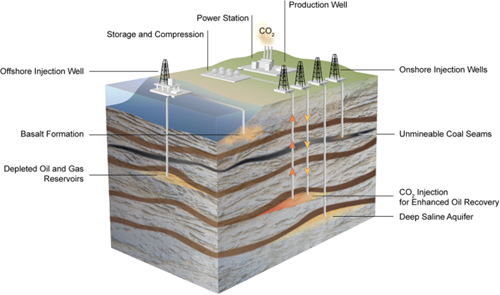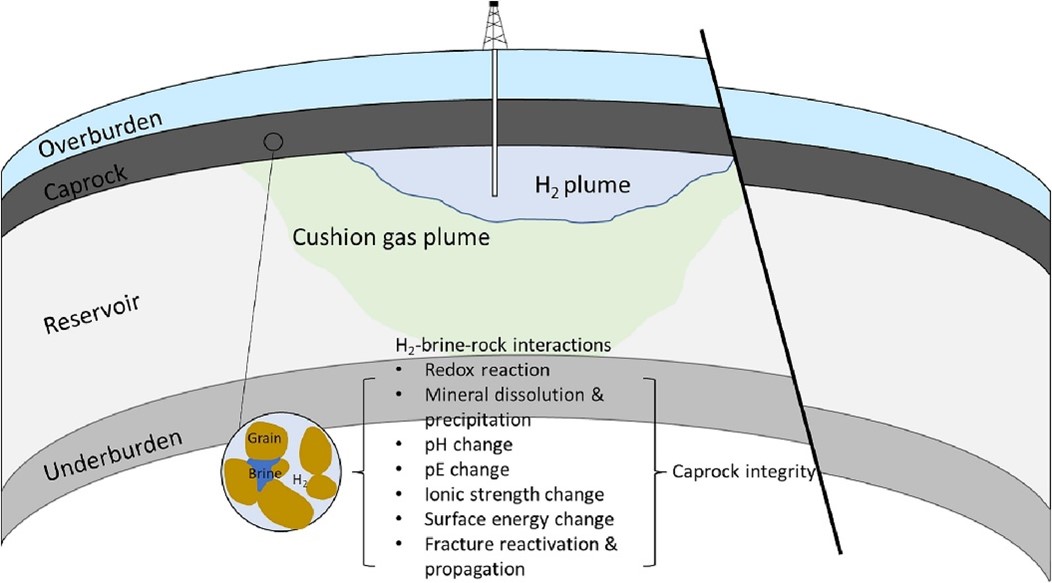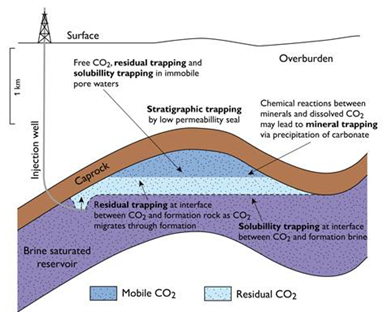a. Background Information
A constant increase of carbon dioxide (CO2) concentration in the atmosphere becomes a significant contributor to increases global earth’s temperature. To prevent further damage to our planet, participating countries of the Conference of Parties (COP) 26 in Glasgow 2021 commit to reducing global CO2 emissions. In addition, at COP 26, President Joko Widodo said that Indonesia is committed to tackling climate change (read more at https://setkab.go.id). Therefore, OGRINDO ITB, as a research consortium that focuses on the energy, also commit to contributing to the research field related to the energy transition, including carbon capture and utilization storage (CCUS), underground hydrogen storage (UHS) and carbon geological storage (CGS).

Source: Ali et al., 2022 – Overall scheme of the CCUS project
b. b. Research Interest
1. Assessment of hydrogen storage in Indonesia through geochemical modeling
It seems that hydrogen is becoming an energy carrier from fossil fuels to renewable energy in the energy transition era. Since Indonesia has many options for implementing subsurface hydrogen storage, including deep saline aquifers, conventional hydrocarbon reservoirs, and coal seams, a proof-of-concept study related to the suitability assessment of underground hydrogen storage in one of Indonesia's geological formations is essential using geochemical modeling to understand hydrogen-brine-rock interactions.

Sumber: Zeng et al., 2023 – Skema pengaruh interaksi H2-brine-caprock terhadap keutuhan caprock selama UHS
2. Characterization of the wettability of carbon dioxide and hydrogen
Efficiency of underground gas storage projects (CO 2 /H 2 ) in subsurface geological formations depend on trapping mechanisms, including structural/stratigraphic, residual, solution and mineral traps. The first two trapping mechanisms, namely structural/stratigraphic and residual traps, depend on wettability, because wettability controls fluid behavior in porous media. Therefore, characterizing the wettability of potential subsurface formations for the successful implementation of underground gas storage projects is critical to maximize storage capacity and minimize leakage risks.

Source: Data.geus.dk – Overview of conceptual storage sites and different trapping mechanisms (available at https://data.geus.dk/nordiccs/terminology.xhtml ).
Source: Radnia, et al., 2018 – Schematic of the mechanism of nanoparticles